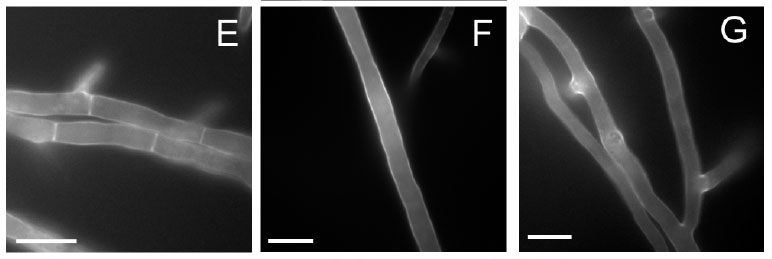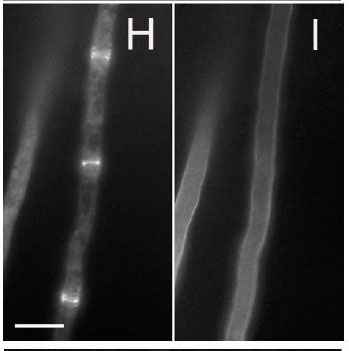

 |
 |
The top image depicts the domain structure of A. nidulans IQGAP, where G/R designates the predicted amino acid substitution.
|
Among several other things demonstrated regarding A. nidulans IQGAP is evidence that it binds to the EF-hand protein Cdc4 (myosin essential light chain) but not to EF hand proteins calmodulin (CamA) or myosin regulatory light chain (MrlC). IQGAP does not, however, require Cdc4 in order to localize to sites of septation.
 |  |
C = IQGAP at septation site; D = Cdc4 at septation site; H = Localization of IQGAP in the absence of Cdc4; I = The same cell stained to show failure to form septa in the absence of Cdc4 | |
|---|---|
Literature:
Hill, T. W, K. E. Wendt, D. A. Jones, M. H. Williamson, U. J. Ugwu, L. B. Rowland, and L. Jackson-Hayes. The Aspergillus nidulans IQGAP orthologue SepG is required for constriction of the contractile actomyosin ring. Fungal Genetics & Biology 144: 103439.

